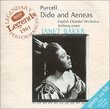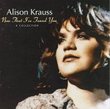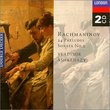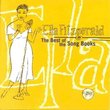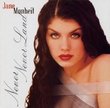| All Artists: Richard Wagner, Karl Bohm Title: Wagner: The Best of the Ring Members Wishing: 0 Total Copies: 0 Label: Philips Release Date: 4/9/1996 Genre: Classical Styles: Opera & Classical Vocal, Historical Periods, Modern, 20th, & 21st Century Number of Discs: 2 SwapaCD Credits: 2 UPC: 028945402024 |
Search - Richard Wagner, Karl Bohm :: Wagner: The Best of the Ring
 | Richard Wagner, Karl Bohm Wagner: The Best of the Ring Genre: Classical
|
Larger Image |
CD DetailsSimilarly Requested CDs
|
CD ReviewsGood introduction to the Ring; good value. David A. Kemp | Plano, TX USA | 09/11/2001 (4 out of 5 stars) "I'm recommending this 2-disc set because it's the best way I know of at the present time to get an inexpensive, manageable, accessible introduction to Wagner's masterpiece, Der Ring des Nibelungen, commonly called the Ring. The Ring is a sequential cycle of four operas, Das Rheingold, Die Walkure, Siegfried, and Gotterdammerung. With the exception of Das Rheingold, they are all of great length (Wagner was a colossal egotist who seemed to believe that no opera could be too long if he was its composer). As a result, acquiring and getting familiar with the entire Ring is an expensive and time-consuming proposition (my choice among complete Ring recordings, the landmark Solti/Vienna Philharmonic set on Decca/London, is 14 CDs costing around $145-$160). Wagner purists will object to any attempt to excerpt "highlights" from the Ring, and they do have a point: unlike the standard Italian and French operas, which are readily divisible into recitatives, arias, duets, etc., the Wagner operas do not lend themselves to excerpting, with the result that "highlights" sets like this one are a collection of "bleeding chunks" torn from the body of the whole work. Nevertheless there is a need for a way to approach the Ring, to be introduced to it and to get its flavor, and this generously filled (2 hours 28 minutes of music) 2-disc set fills that requirement reasonably well. These are excerpts from all four Ring operas from live 1966-67 performances (the second Wieland Wagner production) at Bayreuth, the famed Wagner Festspielhaus in Bavaria; they are not studio recordings. They are not great performances, but they are good, capable, workmanlike ones. The sound is not the equal of the better studio recordings (like the Solti and von Karajan cycles), but it is good enough: clear and never objectionable. The conductor, Karl Bohm, was not a great Wagnerian; he gives a competent reading, favoring brisk tempos, generally lacking repose, keeping things moving along in a business-like manner, but the result is that he seems more interested in moving on to the next scene than in shaping the scene at hand to realize its full potential. His performance overall is characterized by persistent, even relentless, forward pressure. Sometimes this works, sometimes not; if he can be accused of insensitivity, of failing to make the most of his opportunities, he can't be accused of lingering, melting, dawdling, going slack. He is certainly not in the class of Solti or Furtwangler as a Wagner conductor. The notes all get played, but there is little magic fire coming from the pit here.Most of the singers are able and well suited to their roles, and they are all singers who actually sang their roles on the operatic stage (not just in the recording studio). Outstanding are Birgit Nilsson and James King. Here is a chance to hear Nilsson, the greatest Wagnerian soprano of the second half of the twentieth century, "live" in her most celebrated role, Brunnhilde (who figures in the last three Ring operas), and that is an opportunity not to be sneezed at. She offers ringing vocal power, amplitude, stamina, with a brillliant, secure top, an unusual combination that is rarely found in Wagnerian sopranos, and she has no competition in any of the other complete sets except the Solti, where she is competing with herself. When it comes to unleashing her huge voice and letting it soar out over the potent Wagner orchestra, she has no peer, and reminds us of what great Wagnerian singing, heroic singing, used to be all about. James King is the Siegmund in Die Walkure (as he is in the Solti set), and his bright, attractive tenor and musicianly singing are a treat after the ersatz, makeshift Heldentenorizing we've usually had to make do with in Wagner since Melchior retired in 1950. Compare his singing here with the dry, threadbare, underpowered Siegfried of Wolfgang Windgassen--whose creditable performance is a triumph of professional skill over lack of natural resources--and you will see what I mean. Theo Adam as Wotan knows his stuff (he was a well-regarded Wotan) but his vocal endowment is not prepossessing either; he too, like so many Wagner singers of the post-Flagstad-Traubel-Melchior era (i.e., after 1950), is underpowered for the role. This 2-CD set has direct, head-on competition from a similar (and similarly priced) Deutsche Grammophon 2-CD set of highlights from the Ring. The DG set is from the Karajan/Berlin Philharmonic studio recordings of the Ring operas (1967-1970). Here's how I stack up their pros and cons: The Bohm set has generally superior, more involved singing, including Nilsson as Brunnhilde, by singers who sing the same roles throughout (no switching horses in midstream, as in the Karajan, which has two different Wotans, two different Brunnhildes, and two different Siegfrieds), and who actually sang their roles in the opera house, not just in the recording studio (this is a problem with the more "artificial" Karajan set). Also, since the performances are "live," there is a certain sense of vividness, immediacy, and excitement missing in a studio recording. On the other hand, the Karajan set offers generally superior conducting and orchestral playing; his studio recording can be more note-perfect (with its opportunities for re-takes); and the sound of Karajan's set is better than that of Bohm's live performances (although still not as good as Solti's Ring, or the best more recent opera recordings).So, between the Karajan and Bohm 2-CD Ring highlights sets, there is not a clearcut winner. To make choosing more difficult, both are priced the same and both offer very generously filled CDs (both have about two and a half hours of music). I marginally prefer the Bohm "live" performances, but I couldn't argue with anyone who listened to them both and preferred the Karajan." Fire! Fire! Jason | 08/22/2000 (5 out of 5 stars) "Taken from live performances of "Der Ring des Nibelungen" at Bayreuth in 1967, this double-disc compilation of excerpts from Wagner's epic provides a generous selection for persons who want to explore the Ring beyond the usual "highlights" albums without taking on the entire cycle. Although not necessary for those familiar with the Ring, the liner notes contain a brief history of its development, historical and social context, and a synopsis. Unfortunately (or fortunately, depending on one's attitude towards Wagner's prose style), the notes do not provide translations of the excerpts for neophytes.Renowned for his performances of Wagner, conductor Karl Bohm evokes fiery playing from the Bayreuth Festival Orchestra. Particularly at the climaxes, his tempi may seem too brisk for those wanting a more langorous Wagner. Nevertheless, Bohm manages to evoke the same white-hot intensity that make many of his other opera recordings riveting, with piercing horns and thunderous percussion. For opera lovers who already own other versions of Wagner's epic, this compilation may whet their appetites for buying the reasonably-priced complete set of Bohm's interpretation." Highlights From The Classic Live Performance Bill Ratner | Los Angeles, CA USA | 12/30/2003 (5 out of 5 stars) "In the sixties, conductor Karl Bohm found himself treading on the ground that most conductors would think twice because of the huge risk factor - conducting Richard Wagner's The Ring Of the Nibelung (Das Ring Des Nibelungen) a series of four operas dealing with the ancient Norse saga of the legendary ring of power coveted by gods, mortals and giants. The myth also tells the love story of Siegfried and Brunhilde and the end of the world. For Wagner, this would be his ultimate masterpiece. These four opera cycle goes beyond everything he had ever composed musically and for the theatre. Only Tristan and Isolde and Parsifal reach such dramatic heights and is as musically masterful. This classic recording has value, even if it is the highlights and excerpts from the operas. There is a full recording in its entirety with Karl Bohm conducting and with the same singers- Birgit Nilsson as Brunhilde, Wolfgang Windgassen as Siegfried, Leonie Rysanek as Sieglende, James King as Siegmund and Theo Adam as Wotan, king of the gods. These singers were regarded as the best interpretors of their day. Certainly, Birgit Nilsson was born to sing Brunhilde. She has all the drama just in her voice. The inflection is dramatic, her stage presence was commanding, and a voice that even Maria Callas would kill for. Maria Callas sang Brunhilde once in the 40's, but it was never good nor became her signature role. Callas was primarily an Italian singer and she had complications singing German. In Callas' day, Kirsten Flagstad was the reigning Brunhilde interpretor. But Birgit Nilsson's voice far surpasses even Flagstad. Birgit Nilsson has all the heigh notes, the passion, the fire and the Wagnerian touch to a fine art. Theo Adam makes a superb Wotan- imperious, commanding, greedy, regial. His voice was well-trained in German and in the art of Wagner music drama. The same applies to James King, a top-notch German heldentenor who made such roles as Siegfried and Theseus (from Strauss' Ariadne) his own. To sing Wagner is no walk in the park. Only the best heldentenors and Wagnerian soprano divas are employed in this recording. Among them the diva Leonie Rysanek, whose vocals and theatrics on stage was always to her advantage. Here she sings the role of Sieglende- Siegfried's mother and wife of Siegmund. In her dramatic duet with Siegmund, Leonie Rysanek heightens the drama of the moment by actually SCREAMING. It's brilliant. It was well known that Rysanek would always scream her lines when warranted. She has sung other heavy German repertoire- such as Strauss' Salome. Karl Bohm has been criticized for overemphasizing the music, for directing at lightning speed and making a "sloppy", disappointing score for Wagner's Ring. Most fans of the Ring favor George Solti, who was the first to produce the first studio recording of the Ring. Still others prefer Furtwangler, who was a native German and who knew the music so well because for a long time he had been associated with Wagner's descendant family who operate the Bayreuth Festival Opera House. But Karl Bohm, despite his failure in some portions, has his moments. His strength lies in conducting Gotterdammerung's final scene- the Immolation and end of the world. Brunhilde, the last bearer of the cursed ring, has lost her beloved Siegfried to death by traitorous murderer- giants, curses the gods and commits suicide by throwing herself into Siegfrie'ds funeral pyre. The curse of the ring is lifted, the palace of the gods in Vallhalla is consumed in a devastating fire and the world is flooded by the overflowing Rhine river. The theme of the Ring is not too complicated to understand. In much the same vein as J.R.R. Tolkien's "Lord of the Rings" novels, and the recent film adaptations, the curse of a powerful ring is that of corrupted power. Absolute power corrupts absolutely, in the words of philosopher John Locke. The ring, who entitled its beare to total power, was desired by everyone in the opera- from an ugly dwarf (Albrecht) who was willing to sacrifice sexual relations and love for possession of the ring. Albrecht is the instigator. Stealing the gold of the Rhine from the mermaid-like Rhinemaidens, he begins to build a mine and city under the earth. The gods of Valhalla have their own troubles- the giants who built Valhalla want to claim their promised reward- Wotan's wife, the goddess Freya. The powerful god Wotan will not accept the terms. This occurs in the first opera - Das Rhinegold (The Rhinegold). In the second installment, "Die Walkure (The Valkyrie) we are introduced to Siegmund and Sieglende. Because theirs is an illicit romance, Freya convinces Wotan to decree their deaths. But Brunhilde, Wotan's divine daughter opposes the decree and even saves the life of Sieglende who gives birth to the hero Siegfried. Brunhilde is the Valkyrie warrior woman (she is the stereotypical Wagner opera singer wearing a horned helmet , spear, shield, breast plate and battle costume. When Brunhilde's defiance is discovered, Wotan puts a spell over her. She is to sleep inside a ring of fire until the kiss of a demi-god hero awakens her. In this opera, the famous "Ride of the Valkyries" is featured, a dramatic music which has been used time and again in movies and television, most notably in the film "Apocalypse Now". In Siegfried, we follow the quest of Siegfried. He pulls his father's sword from a tree (like King Arthur does in Excalibur only Arthur pulls the sword from a stone and anvil). Siegfried, with the help of the mentor dwarf Mime, journeys into Albrecht's layer, defeats him and slays the vile dragon Falfner. Of course, he kisses Brunhilde and breaks the spell. In the last opera, Gotterdamerung or "Twilight of the Gods", the saga comes to an end when Siegfried is slain by the Gibechung giants. Brunhilde has her famous Immolation Scene and the world of mortals, and even the gods, die during the end of the world. The highlghts here include Siegfried's Rhine Jounrey and Siegfried's Funeral March (this March was used in John Boorman's Excalibur) and the concluding music."
|

 Track Listings (15) - Disc #1
Track Listings (15) - Disc #1